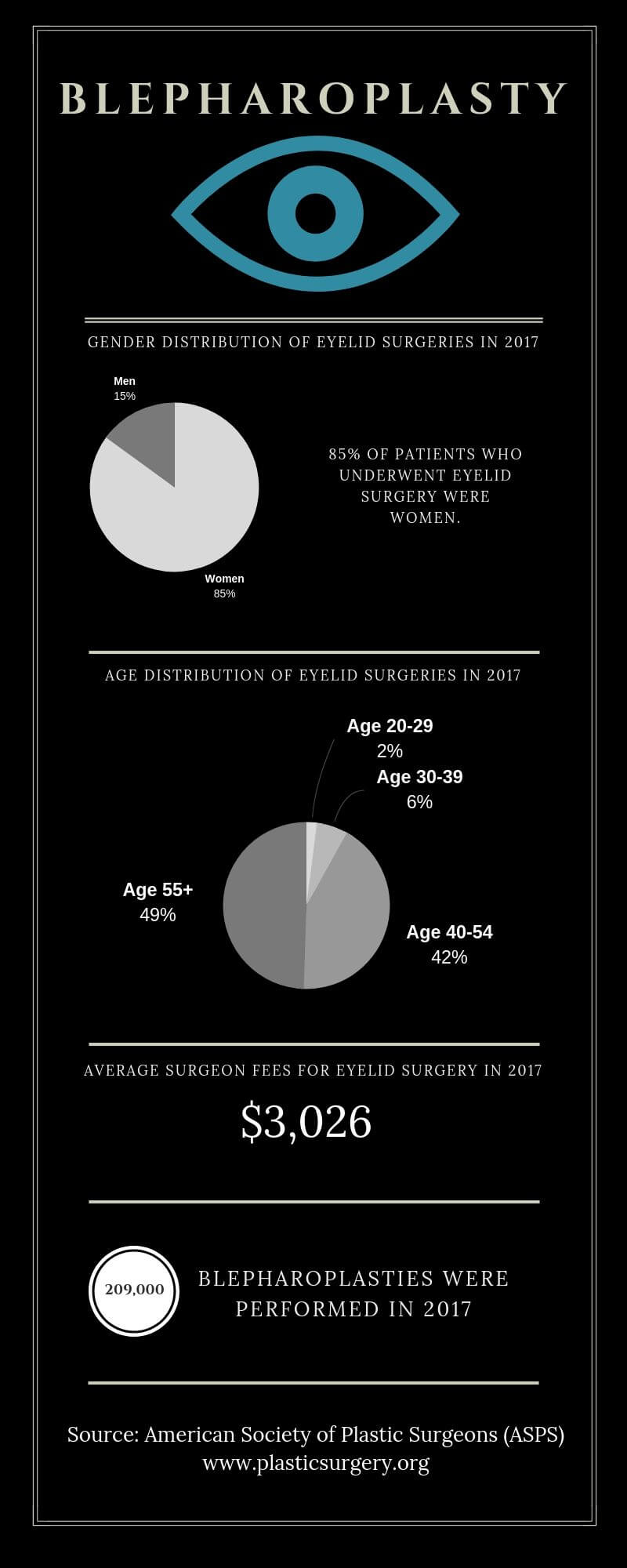Open Your Eyes With Blepharoplasty
Posted November 08, 2018 in Blepharoplasty
Eyelid surgery, also known as blepharoplasty, has been used for years to rejuvenate wrinkled, sagging eyelids. If you notice signs of the passing years in the eye area and are even getting comments from others about your eyes, it’s time you looked into this procedure. As collagen and elastin production decrease with age, delicate eyelid tissues begin to sag. This can give the impression of permanent exhaustion and even cause vision problems.
Blepharoplasty is a way for Dr. Careaga to revitalize aging eyelids and give them a more youthful aesthetic by removing excess eyelid skin, smoothing out wrinkles, and tightening the remaining tissues. It also eliminates or redistributes any excess fat deposits and muscle tissue that can contribute to an aged appearance.
Visit our Blepharoplasty Gallery to see before and after photos of Dr. Careaga’s eyelid surgery patients.
During your blepharoplasty consultation with the board-certified plastic surgeon Dr. Daniel Careaga, you’ll discuss your options. Each option has its own benefits and potential drawbacks, and you’ll be able to ask questions to learn more.
Incision and Anesthesia Options
Eyelid surgery is a great way to give someone a youthful, refreshed appearance. When discussing your upcoming eyelid surgery with Dr. Careaga, one of the topics that must be addressed relates to the ideal incision location. Depending on the type of eyelid rejuvenation you are looking for, one of three incision sites will be available to you. You may also have surgery on both the upper and lower eyelids at the same time.
Local anesthesia with intravenous sedation can be used for patients undergoing only upper eyelid surgery, while general anesthesia is used with lower eyelid surgery or upper and lower eyelid surgeries combined. 
Upper Eyelid Surgery
If you are having your upper eyelids recontoured, Dr. Careaga will create a tiny incision in the eyelid crease that separates the upper lid from the skin below the eyebrow.
Lower Eyelid Surgery
When Dr. Careaga is treating the lower eyelids, there are two incision options:
- Transcutaneous – A small incision is placed just below the eyelash line of the lower lid.
- Subcutaneous – An incision is created on the inside of the lower eyelid, which means that any leftover marks are hidden.
The incision placement will depend on the amount of correction needed and what concerns are being treated.
Once the incision is made, Dr. Careaga will remove excess skin, tissue, and fat, as needed. A laser can also be used in conjunction with your surgery to rejuvenate the skin under your eyes.
Your Recovery
Dr. Careaga will give you thorough post-operative instructions, and it is essential to follow these closely. This will help to make your recovery more comfortable and reduce the risk of complications. You can expect to have some swelling and bruising after your procedure, but these side effects should resolve within about two weeks.
After the excess skin has been removed and your blepharoplasty is complete, your eyes may be very dry. In this situation, Dr. Careaga will apply eye lubrication. You may need to continue administering lubrication during the healing process.
Contact Us Today
A blepharoplasty procedure will help your eyes look revitalized and youthful, so contact our office at (305) 960-7511 or fill out our online contact form to arrange your consultation today.
